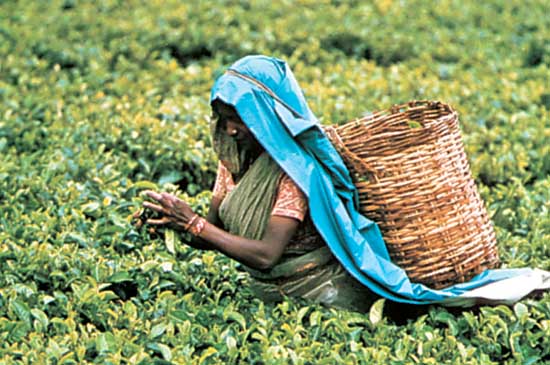Ilankai Tamil Sangam28th Year on the Web Association of Tamils of Sri Lanka in the USA |
|||
 Home Home Archives Archives |
Economic Issues Contributed To Sri Lankan Ethnic Conflictby P.K. Balachandran, IANS, February 4, 2008
And the ethnic conflict has been the single most important problem faced by independent Sri Lanka so far. The ethnic conflict itself has given rise to serious economic problems. But paradoxically, the economic problems created by the ethnic conflict have sometimes spurred efforts to end the conflict and seek a peaceful solution. One of the first acts of free Sri Lanka was the disenfranchisement of the Indian Origin Tamils (IOT) in 1948-49. Nearly a million of these tea and rubber plantation workers were made "stateless". But this political decision, motivated by electoral considerations, had a serious economic impact. "It sent out a danger signal to the wholesale, and export and import businesses, which were largely in the hands of Indian Tamil merchants. Many of them fled the country. It was a big blow. Sri Lanka lost entrepreneurial talent," said Muttukrishna Sarvananthan, founder-director of Point Pedro Institute of Development. In the 1950s, the main issue was the 'domination' of the minorities in the public services, education and in the professions, all sought after modern avenues of employment for the emerging Sinhalese middle class. "The then influential leftist parties supported the struggle against minority domination as they saw it as being against foreign domination," Sarvananthan, who specializes in ethnic issues, told IANS. Undoubtedly, the full-throttle socialism of the 1960s and 1970s (up to 1978) did give rise to an indigenous Sinhalese and even Tamil entrepreneurial class. The government promoted many industries in the public sector. But these enterprises were inefficient and their products lacked markets both at home and abroad. Primary commodities continued to rule exports, and the economy remained plantation centred and backward. The gross domestic product (GDP) growth rate was low. The shift to the 'open economy' in 1978 was not an unmixed blessing. It resulted in the market being flooded by cheap imports, which brought relief to the masses, but hit the local industries hard. However, closures did not affect the common man much, said Sarvananthan. "Hundreds of thousands of Sri Lankans migrated as semi-skilled and unskilled labour to the new oil rich West Asian countries, and sent back remittances. Today, remittances are the second most important source of foreign exchange in Sri Lanka," he said. But by the 1970s, political problems had arisen, both among the Sinhalese and the Tamils. The radical Marxist Janatha Vimkthi Peramuna (JVP) demanded an end to class barriers and launched a violent insurgency in 1971, and again in 1987-88. The anti-Tamil riots of 1983 were essentially directed against Tamil businessmen and professionals. The Tamils, fighting against educational discrimination and land grabbing by the majority Sinhalese with government help, launched an armed struggle for full independence. "The Sinhalese and Tamil insurgencies had forced people to migrate to other countries, leading to a great reduction of the talent pool. But most sent back remittances which kept the economy afloat, albeit artificially," Sarvananthan noted. The crushing of the JVP's insurgency by 1990 restored the economy of the Sinhalese-dominated south. But Tamil militancy continued to damage the economy of the Tamil-dominated northeast. "The six to seven percent growth now claimed by the Sri Lankan government is not based on an honest assessment because the districts of the war-affected north and east are not taken into account," Sarvananthan said. By and large, the localization of the conflict in the northeast through the years had resulted in the south being free for investment. But the targeting of major economic assets in the south by the Tamil Tigers in 1996, 1997 and 2001, led to a negative growth rate in 2001. Meanwhile, the government's defence expenditure went up by leaps and bounds. Spending 4.1 percent of its GDP on defence, Sri Lanka became the highest spender on military in South Asia. The negative growth rate in 2001 led to a serious search for peace in 2002. But come 2006, Sri Lanka was at war again, earmarking huge amounts for armaments and military expenses. In 2008, Sri Lanka could be spending Rs.166 billion ($1.5 billion), mostly on high cost arms. This, along with restrictions on aid flows from the West, is bound to affect the economy adversely, predicted Sarvananthan.
| ||
 Economic issues have played a critical part in Sri Lanka's post-independence history, contributing to the creation of the long-standing ethnic conflict between the majority Sinhalese and the minority Tamils.
Economic issues have played a critical part in Sri Lanka's post-independence history, contributing to the creation of the long-standing ethnic conflict between the majority Sinhalese and the minority Tamils.